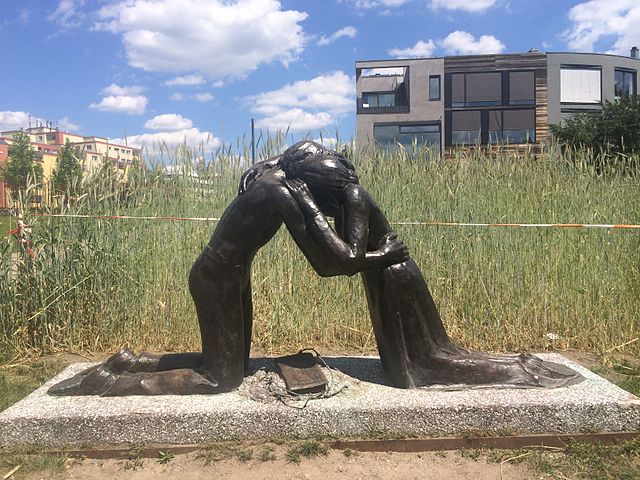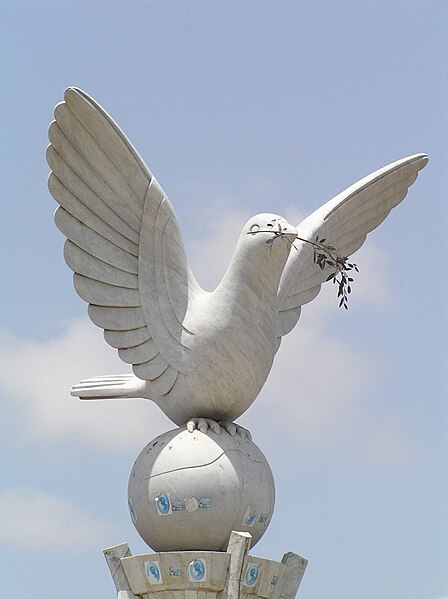Peace and conflict studies
Peace and conflict studies or conflict analysis and resolution is a social science field that identifies and analyzes violent and nonviolent behaviors as well as the structural mechanisms attending conflicts, with a view towards understanding those processes which lead to a more desirable human condition. A variation on this, peace studies (irenology), is an interdisciplinary effort aiming at the prevention, de-escalation, and solution of conflicts by peaceful means, thereby seeking "victory" for all parties involved in the conflict.
Copy of the sculpture Reconciliation by Josefina de Vasconcellos (1977), initially presented to the Bradford University Department of Peace Studies, located in front of the Chapel of Reconciliation at the former site of the Berlin Wall
Indiana's Manchester College was one of the first institutions to offer a major in peace studies.
Norwegian academic Johan Galtung is widely regarded as a founder of peace and conflict studies.
Peacekeeping efforts by armed forces can provide one means to limit and ultimately resolve conflict.
Peace means societal friendship and harmony in the absence of hostility and violence. In a social sense, peace is commonly used to mean a lack of conflict and freedom from fear of violence between individuals or groups.
Peace dove statue in Lomé, Togo, Africa. The dove and the olive branch are the most common symbols associated with peace.
Statue of Eirene, goddess of peace in ancient Greek religion, with the infant Plutus
Croeseid coin of Croesus (c. 550 BCE), depicting the Lion and Bull — partly symbolizing alliance between Lydia and Greece, respectively
Henry Dunant was awarded the first Nobel Peace Prize for his role in founding the International Red Cross.








